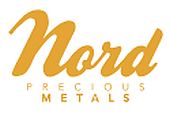 Arizona Silver – Corporate Update
Arizona Silver – Corporate Update
DRILLING CONTINUES TO INTERSECT GOLD, SILVER, BERYLLIUM AT PHILADELPHIA PROJECT IN MOHAVE COUNTY, ARIZONA
Vancouver, British Columbia / May xx, 2019 – Arizona Silver Exploration Inc. (the “Company” or “Arizona Silver”) (TSX-V: AZS) (OTCQB: AZASF) is pleased to announce results of the second set of three drill holes into the gold-silver vein structure at its Philadelphia property in Mohave County, Arizona. Six drill holes have now been completed at the project and results of this work merit returning for a larger scale drill program. The Company was also pleased to find the rare element beryllium in concentrations far higher than normally associated with epithermal gold-silver vein systems.
PRC19-4
- Grade continued down the hole for total intercept of 13.7 metres grading 1.14 gpt Au and 41.1 gpt Ag (45 feet grading 0.033 opt Au and 1.20 opt Ag from 15-60 feet).
- Drill hole PRC19-4 intersected 1.5 metres grading 2.44 gpt Au and 121 gpt Ag (5 feet grading 071 opt Au and 3.53 opt Ag from 45-50 feet depth).
PRC19-5
- Gold and silver continued for a wider interval of 15.2 metres grading 1.09 gpt Au and 17.12 gpt Ag (50 feet from 70-120 feet grading 0.032 opt Au and 0.50 opt Ag).
- Drill hole PRC19-5 intersected 1.5 metres grading 4.41 gpt Au and 52 gpt Ag (5 feet grading 0.129 opt Au and 1.52 opt Ag from 105-110 feet).
PRC19-6
- Gold and silver continued for a wider interval of 9.15 metres grading 0.95 gpt Au and 17.38 gpt Ag (30 feet from 130-160 feet grading 0.028 opt Au and 0.51 opt Ag).
- Drill hole PRC19-6 intersected 1.5 metres grading 3.86 gpt Au and 32.9 gpt Ag (5 feet grading 0.113 opt Au and 0.96 opt Ag from 130-135 feet).
Reported intercepts are approximate true widths. Please see the Company’s news release of May 15 for results from the first three holes of the program:
The six holes tested only the shallow and near-surface portion of the extension to the old production stopes in the Philadelphia Mine. All six holes hit significant gold and silver values in the targeted vein. The mineral system remains wide open along strike to the north and down dip to the east. The old Philadelphia #2 shaft went down to the 500-ft. level along the vein and from there the vein was drilled to the 700-ft. level. The Company has only begun to test the potential continuity of the high-grade vein.
The presence of high-grade mineralization in the first three holes and continuity of the vein and gold-silver grades in the second three holes indicates the vein and mineral system continues beyond the limits of the old production stopes. Further drilling is required to fully assess the geometry of the higher grade portions along the vein structure. Mineable high grades in the Oatman District occurred in shoots, separated from one another by narrow lower grade zones and intervals.
Beryllium
All six drill holes contain high to very high levels of beryllium, a rare element used in the aerospace industry for products such as aircraft components, missiles and satellites. ICP/MS analyses of samples returned the beryllium values below, all of them associated with the higher grade gold-silver intervals in the six holes drilled at the property.
Drill Hole Interval Be(ppm)
PRC19-1 15-20 ft. 238 ppm
PRC19-2 25-45 ft. 310 ppm
PRC19-3 15-20 ft. 261 ppm
PRC19-4 45-50 ft. 528 ppm
PRC19-5 70-130 ft. 127 ppm
PRC19-6 130-135 ft. 251 ppm
Background values for beryllium outside of the mineralized zone are 1-3 ppm Be. Beryllium values of this magnitude are uncharacteristic of epithermal precious metal systems, where beryllium is generally on the order of 1-10 ppm Be. Beryllium will be tracked and modelled as an accompanying metal to gold and silver at the Philadelphia property.
A geologic section for the six holes PRC19-1 through PRC19-6 has been posted to the website at (http://arizonasilverexploration.com/philadelphia-property/. An assay section will also be posted to the website.
QA/QC and Analytical Procedures
All drill samples were picked up at the drill sites by ALS Minerals personnel and transported under strict chain of custody to the ALS Minerals sample preparation facility in Tucson, Arizona. Each sample was crushed to 70% passing 2 mm, a 250-gram split is taken and pulverized to 85% passing 75 microns, subject to a four-acid digestion, and then analyzed by ICP/MS for a 33-element package including silver, and for gold via 30-gram fire assay with AA finish. Samples over 100 ppm silver are re-analyzed using 30-gram fire assay with gravimetric finish. Samples over 100 ppm Au will be re-assayed using 1-assay ton fire assay methods.
Greg Hahn, President, CEO, and a Certified Professional Geologist (#7122) is the Qualified Person under NI43-101 responsible for preparing and reviewing the data contained in this press release.
Please refer to our web site for additional and complete news updated on Philadelphia property information. www.arizonasilverexploration.com
On behalf of the Board of Directors:
ARIZONA SILVER EXPLORATION INC.
Greg Hahn, President and CEO
Contact: Mike Stark, Chairman and Director
Phone: (604) 833-4278
Neither the TSX Venture Exchange nor its Regulation Services Provider (as that term is defined in the policies of the TSX Venture Exchange) accepts responsibility for the adequacy or accuracy of this release.
CAUTION CONCERNING FORWARD-LOOKING STATEMENTS
This news release includes certain forward-looking statements or information. All statements other than statements of historical fact included in this release are forward-looking statements that involve various risks and uncertainties. Forward-looking statements in this news release include statements in relation to the timing, cost and other aspects of the 2019 exploration program; objectives or expectations of the Company. There can be no assurance that such statements will prove to be accurate and actual results and future events could differ materially from those anticipated in such statements.
Fact Sheet
Company Highlights
- Tight share structure
- No warrants outstanding
- Company founded November 2016
- Insider participation on every raise
- Insiders among the largest shareholders
Share Structure
Shares Issued & Outstanding 34,469,154
Common Shares Held in Escrow 438,014
Options outstanding: 1,427,250
Warrants Outstanding: NIL
Fully Diluted: 35,896,404
Trading Symbols TSXV: AZS, OTCQB: AZASF
Management and Directors
Greg Hahn President & CEO
Mike Stark Chairman & Director
David Vincent Director
Scott Hean Director
Eugene D. Spiering Director
Dong H. Shim CFO
2019 Beryllium
(Data in metric tons of beryllium content unless otherwise noted)
Domestic Production and Use: One company in Utah mined bertrandite ore and converted it, along with imported beryl, into beryllium hydroxide. Some of the beryllium hydroxide was shipped to the company’s plant in Ohio, where it was converted into metal, oxide, and downstream beryllium-copper master alloy, and some was sold. Based on the estimated unit value for beryllium in imported beryllium-copper master alloy, beryllium apparent consumption of 220 tons was valued at about $110 million. Based on value-added sales revenues, approximately 22% of beryllium products were used in industrial components, 21% in consumer electronics, 16% in automotive electronics, 9% in defense applications, 8% in telecommunications infrastructure, 7% in energy applications, 1% in medical applications, and 16% in other applications. Beryllium alloy strip and bulk products, the most common forms of processed beryllium, were used in all application areas. The majority of unalloyed beryllium metal and beryllium composite products were used in defense and scientific applications.
| Salient Statistics—United States: | 2014 | 2015 | 2016 | 2017 | 2018e |
| Production, mine shipments | 270 | 205 | 155 | 150 | 170 |
| Imports for consumption1 | 68 | 66 | 68 | 62 | 86 |
| Exports2 | 26 | 29 | 34 | 38 | 33 |
| Shipments from Government stockpile3 | 1 | 1 | 3 | 2 | — |
| Consumption: | |||||
| Apparent4 | 318 | 233 | 182 | 181 | 220 |
| Reported, ore | 280 | 220 | 160 | 160 | 190 |
| Unit value, annual average, beryllium-copper master alloy, dollars per kilogram contained beryllium5 | 470 | 490 | 510 | 640 | 500 |
| Stocks, ore, consumer, yearend | 15 | 25 | 35 | 30 | 35 |
| Net import reliance6 as a percentage of apparent consumption |
15 | 12 | 15 | 17 | 22 |
Recycling: Beryllium was recovered from new scrap generated during the manufacture of beryllium products and from old scrap. Detailed data on the quantities of beryllium recycled are not available but may account for as much as 20% to 25% of total beryllium consumption. The leading U.S. beryllium producer established a comprehensive recycling program for all of its beryllium products, recovering approximately 40% of the beryllium content of the new and old beryllium alloy scrap. Beryllium manufactured from recycled sources requires only 20% of the energy as that of beryllium manufactured from primary sources.
Import Sources (2014–17):1 Kazakhstan, 44%; Japan, 14%; Brazil, 7%; United Kingdom, 7%; and other, 28%.
Tariff: Item Number Normal Trade Relations
12–31–18
Beryllium ores and concentrates 2617.90.0030 Free.
Beryllium oxide and hydroxide 2825.90.1000 3.7% ad val.
Beryllium-copper master alloy 7405.00.6030 Free.
Beryllium-copper plates, sheets, and strip:
Thickness of 5 millimeters (mm) or more 7409.90.1030 3.0% ad val.
Thickness of less than 5 mm:
Width of 500 mm or more 7409.90.5030 1.7% ad val.
Width of less than 500 mm 7409.90.9030 3.0% ad val.
Beryllium:
Unwrought, including powders 8112.12.0000 8.5% ad val.
Waste and scrap 8112.13.0000 Free.
Other 8112.19.0000 5.5% ad val.
Depletion Allowance: 22% (Domestic), 14% (Foreign).
Prepared by Brian W. Jaskula [(703) 648–4908, [email protected]]
Government Stockpile:7 The Defense Logistics Agency Strategic Materials had a goal of retaining 47 tons of beryllium metal in the National Defense Stockpile.
FY2018 FY 2019
Inventory Potential Potential Potential Potential
Material As of 9–30–18 Acquisitions Disposals8 Acquisitions Disposals8
Beryl ore (gross weight) 1 — — — —
Metal 67 — 2 — 5
Structured powder 7 — — — —
Events, Trends, and Issues: In May 2018, the U.S. Department of the Interior, in coordination with other executive branch agencies, published a list of 35 critical minerals (83 FR 23295), including beryllium. This list was developed to serve as an initial focus, pursuant to Executive Order 13817, “A Federal Strategy to Ensure Secure and Reliable Supplies of Critical Minerals” (82 FR 60835).
Apparent consumption of beryllium-based products was estimated to have increased by about 20% in 2018 from that of 2017. During the first 6 months of 2018, the leading U.S. beryllium producer reported that net sales of its beryllium alloy strip and bulk products and beryllium metal and composite products were 23% higher than those during the first 6 months of 2017. Sales of beryllium products to the consumer electronics, defense, energy, and industrial components markets increased owing to stronger demand.
Because of the toxic nature of beryllium, various international, national, and State guidelines and regulations have been established regarding beryllium in air, water, and other media. Industry is required to carefully control the quantity of beryllium dust, fumes, and mists in the workplace.
World Mine Production and Reserves: Reserves for the United States were revised based on updated company information.
| Mine productione
2017 2018 |
||
| United States | 150 | 170 |
| Brazil | 3 | 3 |
| China | 50 | 50 |
| Madagascar | 6 | 6 |
| Nigeria | 4 | 4 |
| Rwanda | 1 | 1 |
| World total (rounded) | 210 | 230 |
Reserves9
The United States has very little beryl that can be economically hand sorted from pegmatite deposits. The Spor Mountain area in Utah, an epithermal deposit, contains a large bertrandite resource, which is being mined. Proven and probable bertrandite reserves in Utah total about 21,000 tons of contained beryllium. World beryllium reserves are not available.
World Resources: The world’s identified resources of beryllium have been estimated to be more than 100,000 tons. About 60% of these resources are in the United States; by size, the Spor Mountain area in Utah, the McCullough Butte area in Nevada, the Black Hills area in South Dakota, the Sierra Blanca area in Texas, the Seward Peninsula in Alaska, and the Gold Hill area in Utah account for most of the total.
Substitutes: Because the cost of beryllium is high compared with that of other materials, it is used in applications in which its properties are crucial. In some applications, certain metal matrix or organic composites, high-strength grades of aluminum, pyrolytic graphite, silicon carbide, steel, or titanium may be substituted for beryllium metal or beryllium composites. Copper alloys containing nickel and silicon, tin, titanium, or other alloying elements or phosphor bronze alloys (copper-tin-phosphorus) may be substituted for beryllium-copper alloys, but these substitutions can result in substantially reduced performance. Aluminum nitride or boron nitride may be substituted for beryllium oxide.
eEstimated. — Zero.
1Includes estimated beryllium content of imported ores and concentrates, oxide and hydroxide, unwrought metal (including powders), beryllium
articles, waste and scrap, beryllium-copper master alloy, and beryllium-copper plates, sheets, and strip.
2Includes estimated beryllium content of exported unwrought metal (including powders), beryllium articles, and waste and scrap.
3Change in total inventory level from prior yearend inventory.
4Defined as production + net import reliance.
5Calculated from gross weight and customs value of imports; beryllium content estimated to be 4%. Rounded to two significant figures.
6Defined as imports – exports + adjustments for Government and industry stock changes.
7See Appendix B for definitions.
8Disposals are defined as any barter, rotation, sale, or upgrade of National Defense Stockpile stock.
9See Appendix C for resource and reserve definitions and information concerning data sources.
U.S. Geological Survey, Mineral Commodity Summaries, February 2019
http://arizonasilverexploration.com/






















